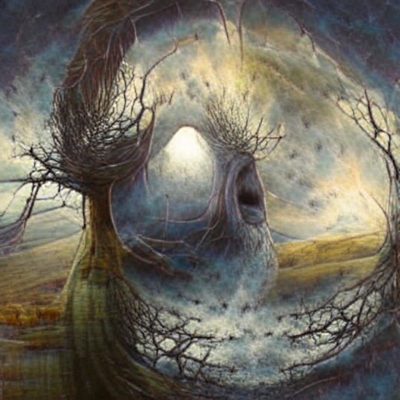News, Trail of Cthulhu
Ken and Robin’s Essential Elements of a Mythos God

In Episode 478 of Ken and Robin Talk About Stuff, we laid out the common elements of Cthulhu Mythos deities. For posterity and ease of searching, here’s the list of necessary ingredients we arrived at.
Cosmic Scale: The entity’s existence is not localized to a single culture or for that matter to one planet. Instead it pervades existence, its influence extending across vast reaches of time and space.
Anthrodecentralizing: As humans, we place ourselves at the core of stories we create. Unlike the traditional, overt gods of our cultures, Mythos deities do not care who we are, what we do, or what becomes of us—if they are aware of us at all. They don’t choose human nations to favor, monitor the behavior of individuals, or send culture heroes to instruct us in survival.
Despite this unconcern, it is possible for humans to interface with them by treating them as objects of worship. Their cultists gain power, perhaps a sense of collective unity, and freedom from the constraints of morality and rationality—always with ultimately destructive results. The deities do not seem to seek this worship. It is not proselytized or publicized, but remains occulted, practiced by by outcasts, eccentrics, and people who hide their true selves from society. Their rites and ceremonies may resemble the activation of a formula or a transaction more than they do conventional prayer.
Visually, Mythos deities defy description. When attempting to depict them in words or images, often the best we can do is to list the incompatible features of some horrible animal hybrid. Cthulhu is an octopus and a bat but also a humanoid. Chaugnar Faugn manifests as an elephant, but also a vampire squid.
The deity personifies a pliable concept of paradoxical unease. Shub-Niggurath upends the concept of fertility into a cancerous corruption. Tsathoggua embodies both hunger and sloth. Yog-Sothoth presents as a gate and a key to that gate, a doorway that is also everywhere and everything.
Finally, a Mythos deity has an inhuman name, which those of us with human tongues and throats struggle to pronounce.
A deity may occasionally seem to omit one of these elements. Yog-Sothoth looks more like a stellar anomaly than a mix of animal parts. One struggles to find cosmicism in Mordiggian, patron god of ghouls. Nyarlathotep numbers among his many forms a human-shaped, demonic parody of a culture hero. By possessing and corrupting humans, Y’golonac also appears to show some interest in us. But our anthrocentric minds have trouble encompassing anthrodecentralizing forces, so these may simply be misperceptions on our part, projections that we make to reduce these deities to the status of mere demons.
Trail of Cthulhu is an award-winning 1930s horror roleplaying game by Kenneth Hite, produced under license from Chaosium. Whether you’re playing in two-fisted Pulp mode or sanity-shredding Purist mode, its GUMSHOE system enables taut, thrilling investigative adventures where the challenge is in interpreting clues, not finding them. Purchase Trail of Cthulhu and its many supplements and adventures in the Pelgrane Shop.

